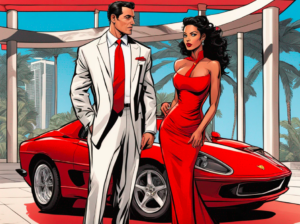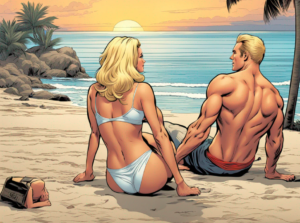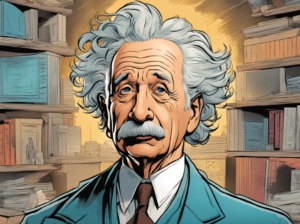Don’t Let The Cost Of Advertising Sink Your Business: Proven Tactics for Profitable Ads


Introduction:
In the thrilling world of business, where fortunes rise and fall, there is one factor that can make or break a company’s success: the customer. But here’s the catch—it’s not just about getting customers through the door; it’s about keeping them there, buckled up for the long ride. Strap yourselves in as we explore the rollercoaster of customer retention, where the cost of acquisition is six times higher, and neglecting the customer can send them screaming for the exit gates.
The Price Tag of a Customer:
Step right up, ladies and gentlemen, and witness the astounding truth—acquiring a customer is a wallet-crushing endeavor. It takes an average of $300 per account just to lure them in. But why, you ask? It’s because businesses are desperately hoping these customers stick around for a lifetime. After all, what’s the point of investing if they vanish like a magician’s assistant after the grand finale?
The Twelve-Month Drop:
Hold on tight as we navigate the twists and turns of customer loyalty. Shockingly, 32% of customers wave goodbye within the first 12 months. It’s as if they’re saying, “Thanks for the ride, but I think I’ll find another rollercoaster.” But that’s not all—let’s zoom in on those maintenance fees. Can you believe it takes a whopping 25 months just to break even? It’s like waiting in line for hours, only to discover that the ride isn’t as thrilling as promised.
The Ghost Riders:
Prepare to be amazed as we reveal a truly mind-boggling statistic. Brace yourselves, folks—20% of customers who abandon ship in their first year don’t even make a single transaction. They’re like passengers who bought a ticket but never set foot on the rollercoaster. No ATM withdrawals, no payments, nothing! It’s a mystery why they jumped off before the ride even began.
The Speed Demon Exit:
Buckle up, folks, because we’re about to witness some heart-pounding velocity. Half of the customers who decide to leave will do so within the first 100 days. It’s like they’re testing the waters, and if they don’t experience that initial rush of excitement, they’re gone in a flash. Even the cell phone industry isn’t immune, with 20% of customers breaking their contracts within the same timeframe. The thrill seekers aren’t wasting any time!
The Repair Shop Abyss:
Hold onto your hats because we’re about to experience some stomach-churning drops. In the world of auto repair shops, 60-70% of customers who visit the repair shop never return. It’s like taking a wrong turn and ending up in a dark alleyway instead of enjoying the dazzling lights of the amusement park. Once they encounter trouble, they’re off to find a smoother, less bumpy ride.
The Restaurant Roulette:
Enter the culinary rollercoaster where taste buds and loyalty collide. Astonishingly, 46% of restaurant customers vow never to return because their experience was not good enough for them to return. It’s like having a sour stomach after indulging in a rollercoaster snack. The magic of mouthwatering meals can quickly disappear if the ride doesn’t live up to expectations.
The Great Escape:
It’s time to uncover the reasons behind these disappearing acts. Brace yourselves for the shocking truth—customers are leaving because they feel neglected. Businesses often drop the ball when it comes to creating a remarkable experience after the sale. It’s as if they’ve forgotten that the journey doesn’t end with the purchase. Neglecting the emotional side of the customer experience has turned the business world into a robotic, soulless place, stripping away the humanity and personal connection that keeps
Conclusion
Advertising has become highly competitive because people have grown numb to the traditional methods employed by advertisers. Everyone seems to be saying the same thing, just with a different company or brand name. Chet Holmes International reveals that over the last 20 years, companies have been spending six times more on advertising to achieve the same results they obtained 15-20 years ago. As a result, many companies are experiencing financial losses from their advertising efforts.
To stand out in this saturated landscape, you need to employ out-of-the-box thinking, as Steve Jobs famously called it, “Think Different.”
Online advertising often operates on a bidding process, where the highest bidder gets the most traffic, driving up prices for everyone else. This means you need to possess a deep understanding of running profitable ads. Unfortunately, this pricing structure has made it difficult for smaller companies to compete as they end up spending more on advertising than they earn.
While many companies pursue one customer at a time, there is another approach called “joint ventures” or “group marketing.” With this strategy, landing a single customer can result in hundreds, thousands, or even tens of thousands of new customers, depending on the scale of the deal.
Building a large following takes considerable time and effort, but once you have a substantial following, reaching your financial goals becomes easier. Imagine finding someone who is already successful and having them send a message to their following, endorsing you and your offerings.
I experienced this firsthand when I started a new business and made a deal with Joel Broughton, who sent an email to his customer base endorsing my products. Within six hours of sending that email, I made 141 sales. In my first six hours alone, I earned nearly $15,000, and over the next 12 months, that deal turned into a consistent monthly income of $150,000.
Another successful deal I struck was with Al Nin and his dentist, resulting in $6.5 million in revenue over a 12-month period. I’m nothing special; I simply possessed knowledge about a lesser-known method to gain recommendations from companies and individuals to their customer base. You too are just one deal away from changing your life.
Covering all the details here would be impossible, so I invite you to visit 90daymillion.alphalifestyleacademy.com for more information.








